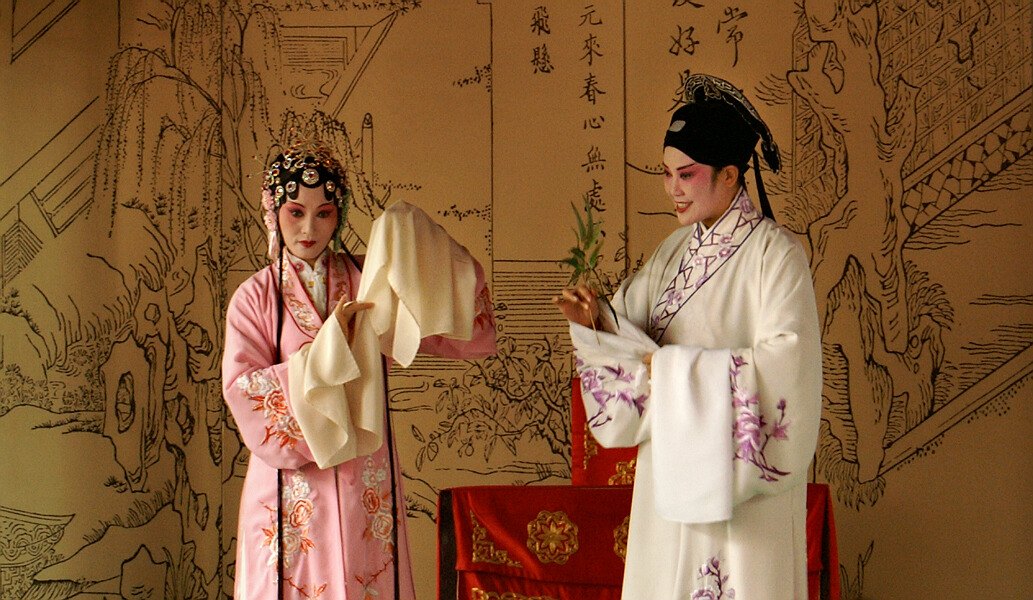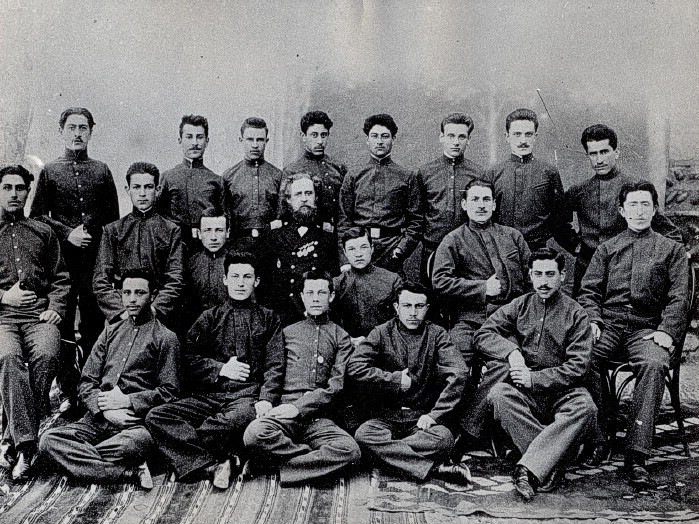|
Tar (Azerbaijani Instrument)
The Azerbaijani Tar is a long-necked, plucked lute, traditionally crafted, and performed in communities throughout the Republic of Azerbaijan. The tar is featured alone or with other instruments in numerous traditional musical styles. It is also considered by many to be the country's leading musical instrument. The tar and the skills related to this tradition play a significant role in shaping the cultural identity of Azerbaijani people, Azerbaijanis. In 2012, the craftsmanship and performance art of the tar was added to the UNESCO's UNESCO Intangible Cultural Heritage Lists, Intangible Cultural Heritage List. Performing Performers hold the instrument horizontally, against the chest, and pluck the Strings (music), strings with a plectrum, while using Trill (music), trills and a variety of techniques and strokes to add colour. Tar performance has an essential place in Wedding tradition in Azerbaijan, weddings and different social gatherings, festive events, and public concert ... [...More Info...] [...Related Items...] OR: [Wikipedia] [Google] [Baidu] |
Tar (string Instrument)
The tar () is a long-necked, waisted instrument in the lute family, used by many cultures and countries in the Middle East and the Caucasus, including Iran, Azerbaijan, Uzbekistan, Armenia, Georgia, Tajikistan, and Turkey.tar (musical instrument) ''Encyclopædia Britannica''. Retrieved on 1 January 2013. It was originally known as the ''chahartar'' () or ''chartar'' (), which translates into as 'four-stringed'. This is in accordance with a practice common in Persian-speaking areas of distinguishing lutes on the basis of the number of strings originally employed. Beside the ''chartar'', these include the '' |
Masterpieces Of The Oral And Intangible Heritage Of Humanity
The Proclamation of Masterpieces of the Oral and Intangible Heritage of Humanity was made by the Director-General of UNESCO starting in 2001 to raise awareness of intangible cultural heritage—such traditions, rituals, dance, and knowledge—and urge the protection of the communities that create them. Several manifestations of intangible heritage around the world were awarded the status of ''Masterpieces;'' further proclamations occurred biennially. The status exists to recognize the value of non-material culture, as well as to commit states to promote and safeguard the Masterpieces. In 2008, the 90 declared Masterpieces were incorporated into the new Representative List of the Intangible Cultural Heritage of Humanity as its first entries. Background UNESCO defines oral and intangible heritage as "the totality of tradition-based creations of a cultural community expressed by a group or individuals and recognized as reflecting the expectations of a community in so far as they refl ... [...More Info...] [...Related Items...] OR: [Wikipedia] [Google] [Baidu] |
Culture Of Azerbaijan
The culture of Azerbaijan () combines a diverse and heterogeneous set of elements which developed under the influence of Iranian peoples, Iranic, Turkic peoples, Turkic and Peoples of the Caucasus, Caucasian cultures. Azerbaijani culture includes its Azerbaijani cuisine, cuisine, Azerbaijani literature, literature, Azerbaijani folk art, folk art, architecture and Azerbaijani music, music. History Azerbaijan is the modern name of a historic, geographic region on the border of Eastern Europe and Western Asia, formerly known as Aran (or Ardan) by Persian empires and Albania by the Greeks. It is bounded by the Caspian Sea on the east, Dagestan on the north, Georgia (country), Georgia on the northwest, Armenia and Turkey on the southwest, and Iran on the south. Although Azerbaijan is home to a number of ethnic groups, ten million people are Azerbaijanis. The heritage, culture, and civilization of Azerbaijan have ancient and modern roots. Its people are believed to be descendants o ... [...More Info...] [...Related Items...] OR: [Wikipedia] [Google] [Baidu] |
Azerbaijani Musical Instruments
Azerbaijani traditional musical instruments are a family of ancient string, wind and percussion instruments used in the performance of Azerbaijani folk music, Azerbaijani traditional music. Types of instruments Instruments used in traditional Azerbaijani music include the stringed instruments ''Tar (lute), tar'' (skin faced lute), the ''kamancha'' (skin faced spike fiddle), the ''oud'', originally ''barbat'', and the ''baglama, saz'' (long necked lute); the double-reed wind instrument ''Balaban (instrument), balaban'', the frame drum ''ghaval'', the cylindrical double faced drum ''nagara (drum), nagara'' (''davul''), and the ''goshe nagara'' (''naqareh'') (pair of small kettle drums). Other instruments include the ''garmon'' (small accordion), ''Dilli kaval, tutek'' (whistle flute), and ''daf'' (frame drum). The zurna and naghara duo is played at weddings and other local celebrations. Instruments can be played individually, in an improvisational manner, in ensembles, during tra ... [...More Info...] [...Related Items...] OR: [Wikipedia] [Google] [Baidu] |
Mugham
Mugham () or Mughamat () is one of the many classical compositions from Azerbaijan, contrasting with tasnif and ashik. It is an art form that weds classical poetry and musical improvisation in specific local modes. Mugham is a modal system. Unlike Western modes, "mugham" modes are associated not only with scales but with an orally transmitted collection of melodies and melodic fragments that performers use in the course of improvisation. Mugham is a compound composition of many parts. The choice of a particular mugham and a style of performance fits a specific event. The dramatic unfolding in performance is typically associated with increasing intensity and rising pitches, and a form of poetic-musical communication between performers and initiated listeners. Three major schools of mugham performance existed from the late 19th and early 20th centuries in the regions of Karabakh, Shirvan, and Baku. The town of Shusha of Karabakh, was particularly renowned for this art. A sho ... [...More Info...] [...Related Items...] OR: [Wikipedia] [Google] [Baidu] |
Music Of Azerbaijan
Azerbaijani music ( Azerbaijani: Azərbaycan musiqisi) is the musical tradition of the Azerbaijani people from the Azerbaijan Republic. Azerbaijani music has evolved under the badge of monody, producing rhythmically diverse melodies.Энциклопедический музыкальный словарь, 2-е изд., Москва, 1966 (''Encyclopedical Music Dictionary'' (1966-1967), 2nd ed., Moscow) Music from Azerbaijan has a branch mode system, where chromatisation of major and minor scales is of great importance. Classical music In 1920, Azerbaijani classical music had undergone a renaissance and the Baku Academy of Music was founded to give classical musicians the same support as folk musicians. Modern-day advocates of Western classical music in Azerbaijani include Farhad Badalbeyli, Fidan Gasimova and Franghiz Alizadeh. Opera and Ballet The emergence of opera and ballet in Azerbaijan is associated with the Imperial Russian and Soviet eras of Azerbaijani ... [...More Info...] [...Related Items...] OR: [Wikipedia] [Google] [Baidu] |
Kamancha
The kamancheh (also kamānche or kamāncha) (, , , ) is an Iranian bowed string instrument used in Persian traditional music, Persian, Azerbaijani music, Azerbaijani, Armenian music, Armenian, Kurdish music, Kurdish, Music of Georgia (country), Georgian, Music of Turkmenistan, Turkmen, and Music of Uzbekistan, Uzbek music with slight variations in the structure of the instrument. The kamancheh is related to the rebab which is the historical ancestor of the kamancheh and the bowed Byzantine lyra. The strings are played with a variable-tension Bow (music), bow. In 2017, the art of crafting and playing with Kamantcheh/Kamancha was included into the UNESCO Intangible Cultural Heritage Lists of Azerbaijan and Iran. Name and etymology The word "kamancheh" means "little bow" in Persian (''kæman'', bow, and ''-cheh'', diminutive). The Turkish word kemenche, kemençe is borrowed from Persian, with the pronunciation adapted to Turkish phonology. It also denotes a bowed string inst ... [...More Info...] [...Related Items...] OR: [Wikipedia] [Google] [Baidu] |
Mugham
Mugham () or Mughamat () is one of the many classical compositions from Azerbaijan, contrasting with tasnif and ashik. It is an art form that weds classical poetry and musical improvisation in specific local modes. Mugham is a modal system. Unlike Western modes, "mugham" modes are associated not only with scales but with an orally transmitted collection of melodies and melodic fragments that performers use in the course of improvisation. Mugham is a compound composition of many parts. The choice of a particular mugham and a style of performance fits a specific event. The dramatic unfolding in performance is typically associated with increasing intensity and rising pitches, and a form of poetic-musical communication between performers and initiated listeners. Three major schools of mugham performance existed from the late 19th and early 20th centuries in the regions of Karabakh, Shirvan, and Baku. The town of Shusha of Karabakh, was particularly renowned for this art. A sho ... [...More Info...] [...Related Items...] OR: [Wikipedia] [Google] [Baidu] |
Muslim Magomayev (composer)
Abdulmuslim Muhammad oghlu Magomayev (; 18 September 1885 in Grozny – 28 July 1937 in Nalchik), commonly known as Muslim Magomayev (), was an Azerbaijani composer and conductor. He is the grandfather and namesake of Azerbaijani opera singer Muslim Magomayev. Early life He was born Abdulmuslim Magomayev into a family of a blacksmith on the same day another prominent Azerbaijani composer Uzeyir Hajibeyov was born.Muslim Magomayev by Uzeyir Hajibeyov. ''Bakinski Rabochi'' newspaper. 28 July 1938. Retrieved 1 January 2007 He studied at a primary school in Grozny before being admitted to the Gori Pedagogical Seminary (in present-day |
Uzeyir Hajibeyov
Uzeyir bey Abdulhuseyn bey oghlu Hajibeyov (18 September 188523 November 1948) was an Azerbaijanis, Azerbaijani composer, musicologist and teacher. He is recognized as the father of Azerbaijani classical music. He composed the music of the Azərbaycan marşı, national anthem of Azerbaijan Democratic Republic (which was re-adopted after Azerbaijan regained its independence from the Soviet Union in 1991). Hajibeyov also composed the anthem used by Anthem of the Azerbaijan SSR, Azerbaijan during the Soviet period. He was the first composer of an opera in the Islamic world. He composed the first oriental opera ''Leyli and Majnun (opera), Leyli and Majnun'' in 1908 and since then he is revered for adapting the written masterpiece to the theatre. Early life Uzeyir Hajibeyov was born in Aghjabadi, near Shusha of Azerbaijan, on 18 September 1885. His father, Abdulhuseyn bey Hajibeyli, was the secretary to Khurshidbanu Natavan for many years, and his mother, Shirin, grew up in the Nat ... [...More Info...] [...Related Items...] OR: [Wikipedia] [Google] [Baidu] |
Sadigjan
Mirza Sadig, more commonly known as Sadigjan (; 1846 – 1902), was an Azerbaijani folk musician, tar player, and the creator of the Azerbaijani tar (also known as upgraded tar). Sadigjan is one of the famous Azerbaijani tar players. By improving this instrument, Sadigjan expanded the possibilities of virtuoso playing on this instrument. He increased the number of strings from 5 to 13, made additional changes to the body of the instrument, and completely changed the system of frets on the tar's neck reducing their number from 27–28 to 22. Sadigjan introduced significant innovations in the Azerbaijani mugham improving the " Segah", "Mirza Huseyn Segah" and the "Mahur" mughams. The appearance in Azerbaijani music of "Mahur-Hindi", "Orta Mahur", "Zabul Segah", "Kharij Segah", "Yetim Segah", "Choban Bayati" mughams is associated with the work of Sadigjan and the Azerbaijani tar. In the 1890s, under the leadership of Sadigjan, an ensemble was created in Shusha. This included famo ... [...More Info...] [...Related Items...] OR: [Wikipedia] [Google] [Baidu] |





